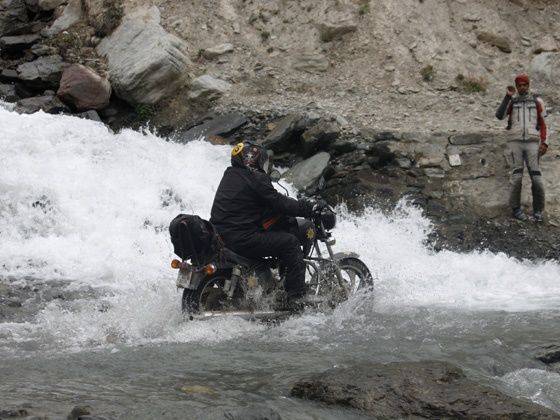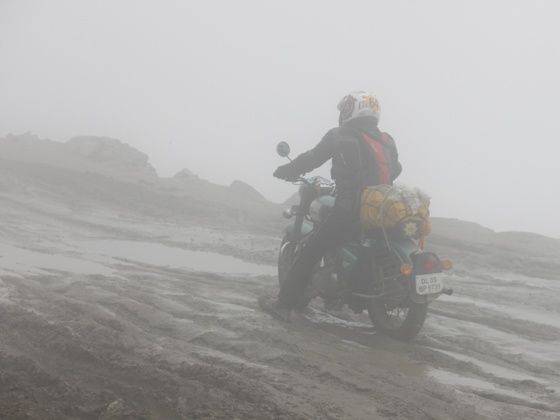Tackling different terrain in the Himalayas
by Words and Pics: Ravi Ved Posted on 05 Aug 2011
Posted on 05 Aug 2011 21587 Views
21587 Views 2 Comments
2 Comments
 Posted on 05 Aug 2011
Posted on 05 Aug 2011 21587 Views
21587 Views 2 Comments
2 Comments
A Himalayan
ride is more than just riding to some of the highest motorable roads in
the world, more than just riding through beautiful landscapes filled
with snow-capped mountains and rivers. It's about learning to tackle
different kinds of terrain and developing your riding skills to master
them. Here are a few quick tips about how to deal with anything that
comes your way
One of the primary reasons why riding to the Himalayas has
gained massive popularity in the past decade is that it tests not just
your physical endurance; it also tests your riding skill to the limit.
Gravel, slush, snow, rain are just some of the hurdles you come across
during the ride.
Gravel: Landslides in the hilly areas leave a lot of gravel on the road which makes riding through it very tricky. And riding through gravel is nothing like riding on asphalt or concrete. For a smooth ride through gravel you need to work extra hard to maintain traction at all times in order to have complete control of the bike. For this, moderated throttle control is important. Pulling the clutch too often is also a pretty bad idea, especially while rolling downhill or braking, as without the engine driving the rear wheel of the bike, stability is thoroughly compromised. The ideal way to ride is to shift to an appropriate gear, and gently throttle your way out of gravel patches. Obviously there will be some wobbling and shaking of the front wheel. The key is to keep a relaxed grip on the handlebars if the front wheel wobbles and maintain a consistent throttle input. Braking hard in the gravel can make you bike slide out of control. So if you need to slow down, a combination of rear brakes and engine braking works the best. Avoid grabbing the front brake suddenly and be gentle with your inputs.

Water crossings: On your ride through the Himalayas, you will encounter numerous streams which flow across the road. The water is fast flowing and frothy which makes it difficult to see what lies beneath and in most likelihood it is laden with stones. Visually gauge which is the shallowest path to the other side and gradually find your way through it. Like gravel, keep a relaxed grip on the handle and let the front find its way. Do not use the clutch as far as possible; a lot of riders try to cross using half-clutch which can easily lead to burnt clutch plates. If you get stuck in the water due to a stone, try rocking your bike back and forth and throttle your way out of it. Try to keep the engine running even if your bike gets stuck. And if it does get stuck, push it out under engine power. If it stalls after ingesting water though, don’t try and start it there. Get your buddies to help you push it out and restart the engine after it has had a few minutes to dry out.
Slush: This is the trickiest bit of riding to the Leh. Certain areas are slushy with soft mud covering a long patch of the road and are well known for ruining clutch plates and snapping clutch cables. Just like on gravel, keep your body relaxed and don’t grip the handle bars too rigidly. Do not ride the clutch. Wheel-spins are common occurrences in slush, so pushing the bike with your feet helps in such situations. If the rear slides too much and tips the bike to dangerous angles, put your legs on the ground to support and straighten the bike again. In extreme situations you might even have to keep you leg down and ride they way you do in slow moving traffic. If possible clean the muck off your engine and the exhaust pipe as soon as possible, the dried off mud may cause a hindrance in cooling the engine down.

No comments:
Post a Comment